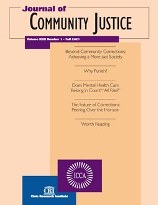Substance Abuse and the Offender: Making Decisions About Release
Author: Michael F. Crowley.
Source: Volume 17, Number 02, Winter 2008 , pp.13-14(2)

< previous article |next article > |return to table of contents
Abstract:
It is clear that alcohol and other drug problems constitute a major problem in North America for both incarcerated offenders and those who are on some form of community release. It is estimated that about 70% of offenders have substance abuse problems that are in need of some form of treatment, and that more than 50% of their crimes are linked with substance use and abuse. The mandate of the National Parole Board of Canada is to make decisions about the timing and conditions of the release of offenders that will contribute to the protection of the public by facilitating offenders’ reintegration into the community as law-abiding citizens. The board is empowered to release offenders on day parole or full parole: Day parole requires that offenders reside at a community-based residential facility (operated by a private sector agency) or at a community correctional center (operated by the Correctional Service of Canada; Full parole may be granted after offenders have served at least one term (six months) of day parole. In meeting this primary mandate, the board must assess the risk posed by each offender and then examine the proposed plan for release that is offered by that person. In essence, the board will grant the release if it determines that: The offender is not likely to reoffend; The risk of reoffense is not undue; and the release will facilitate the offender’s reintegration.This article reviews the criteria, including risk factors and criminogenic needs, that are evaluated in the release decision.Keywords:
Affiliations:
1: National Parole Board of Canada.